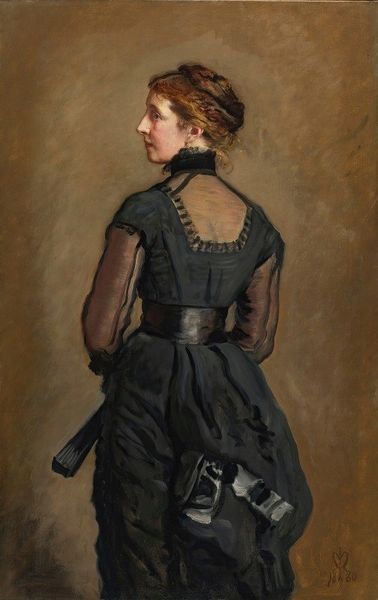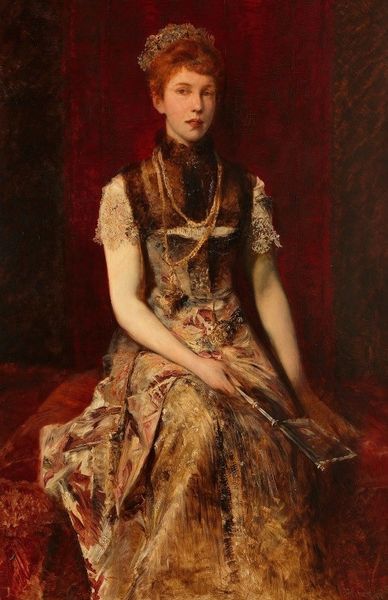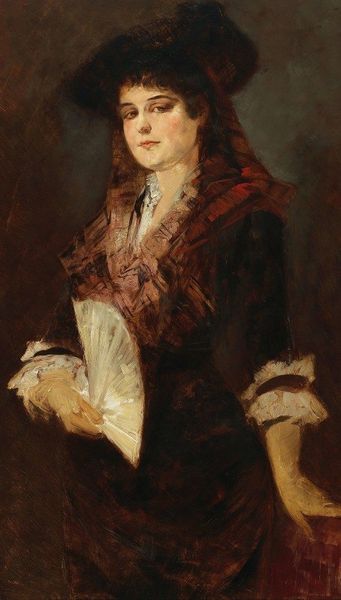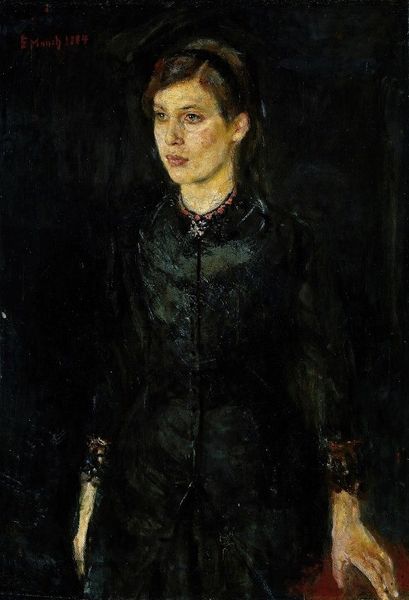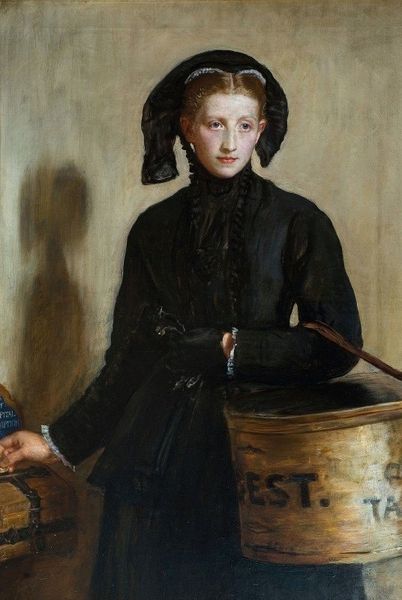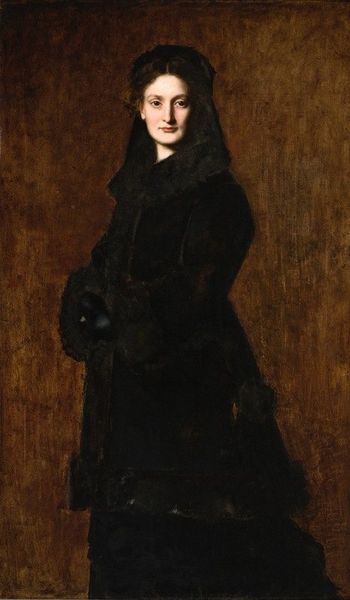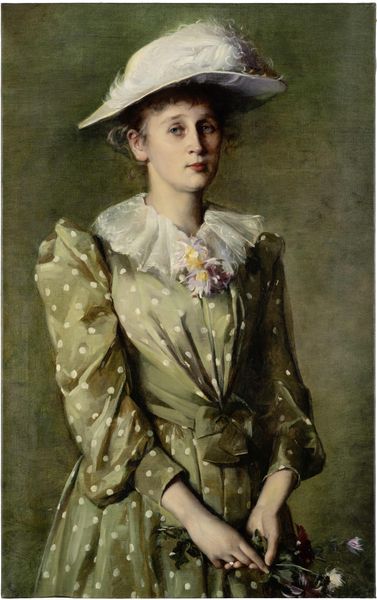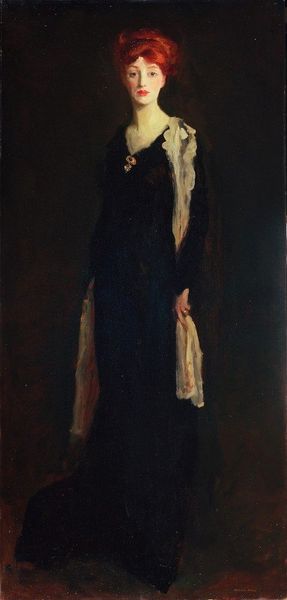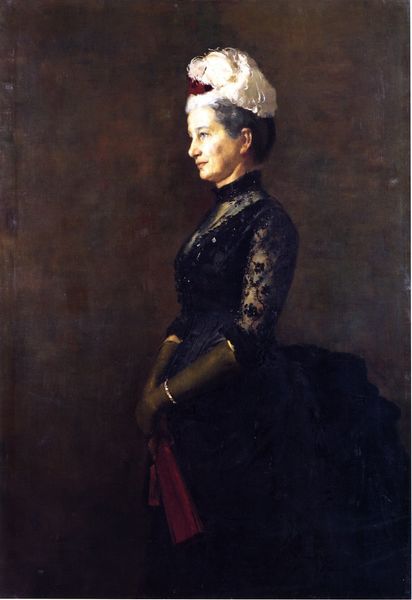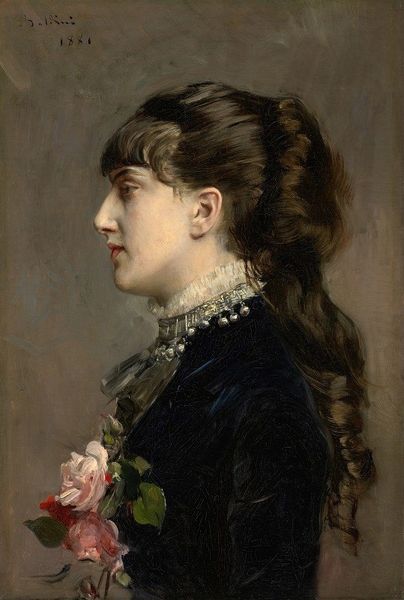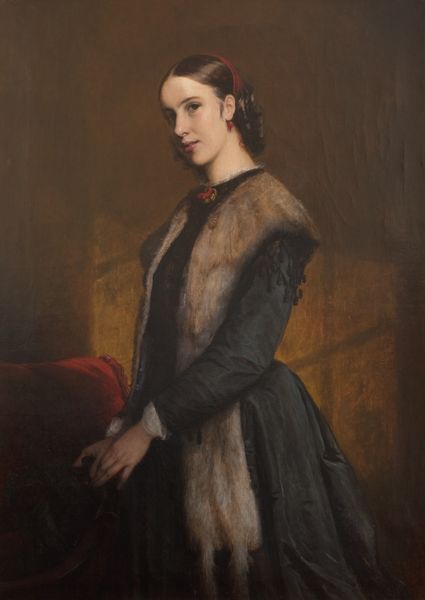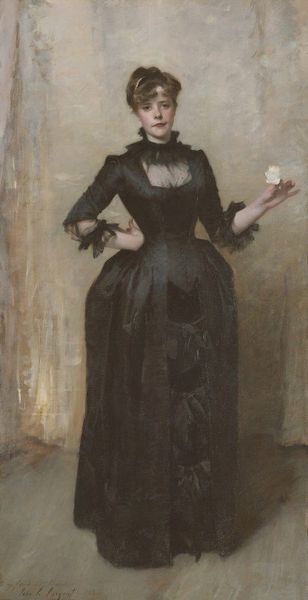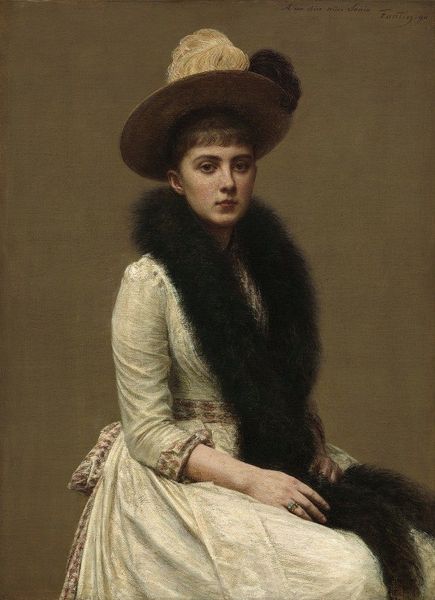
Copyright: Public Domain: Artvee
Curator: Here we have Léon François Comerre’s "Portrait de Jacqueline Comerre-Paton en robe noire" from 1879. It's an oil painting, a striking depiction of his wife. What's your first take on this piece? Editor: Somber elegance, immediately. She looks like she knows something we don't. It’s almost theatrical, that dramatic sweep of the black fabric against the muted backdrop. Gives me a sense of quiet strength. Curator: I think the materials truly dictate the mood. The oil paint, likely applied in thin layers, allows for that incredible rendering of the fabric’s texture. We should consider the availability and cost of black dye at that time – a status symbol. Editor: Definitely. And you can see Comerre really luxuriating in the way light catches the ruffles and folds. Almost as if he’s showing off his technical skill as much as portraying his wife. Do you think the subdued palette was a conscious choice to highlight her features? Curator: Absolutely. Black dye was more than an aesthetic preference, though it’s definitely working that way here. It represented significant capital, and displayed wealth and refinement – not just in the raw material, but in the complex dying processes needed. So, a marker of high status reflected in Jacqueline's self-presentation. Editor: The almost photographic detail is quite stunning. The slight imperfections, the stray hairs – these intimate details hint at the sitter's inner life and personality. In some ways, she looks as if she's posing, but ready to leave. Is that how the light touches her hands, making them seem to quiver slightly? She doesn’t seem entirely comfortable in this formal presentation, which lends it authenticity, perhaps a kind of honesty? Curator: I'd say so. The labour involved in both the creation and display is palpable. Comerre is displaying not only his wife's portrait, but an engagement in production of image through materials. It reminds us of social structures, access, and a sort of cultural consumption that speaks volumes. Editor: Thinking about that play of dark and light... there's something incredibly modern about this portrait. It captures a certain essence of female stoicism, or what could be described as 'enduring,' but without slipping into romanticized territory. This really makes me contemplate a quiet, determined gaze into the future. What about you? Curator: I see it similarly, in how the artwork manifests these historical contexts of labour, material production, and gender in the 19th century, echoing our own era in ways we might not readily acknowledge.
Comments
No comments
Be the first to comment and join the conversation on the ultimate creative platform.
